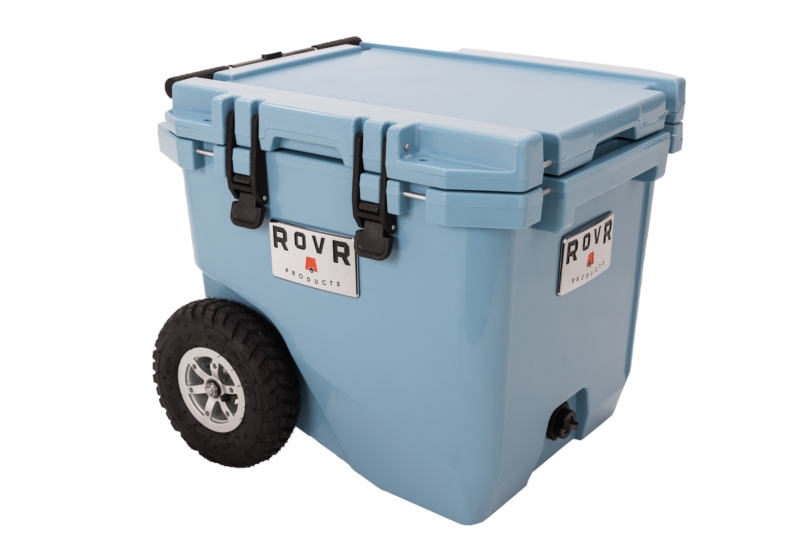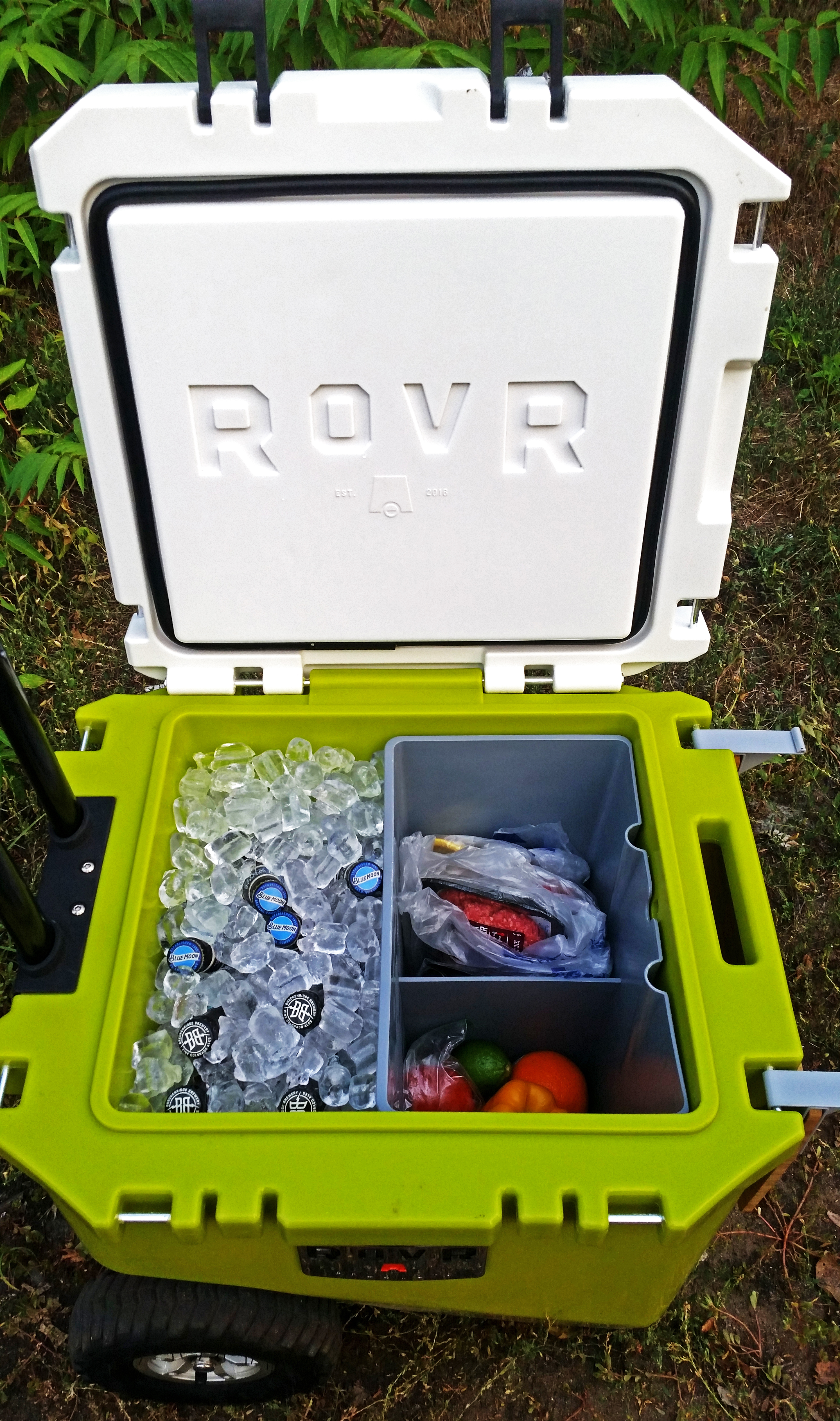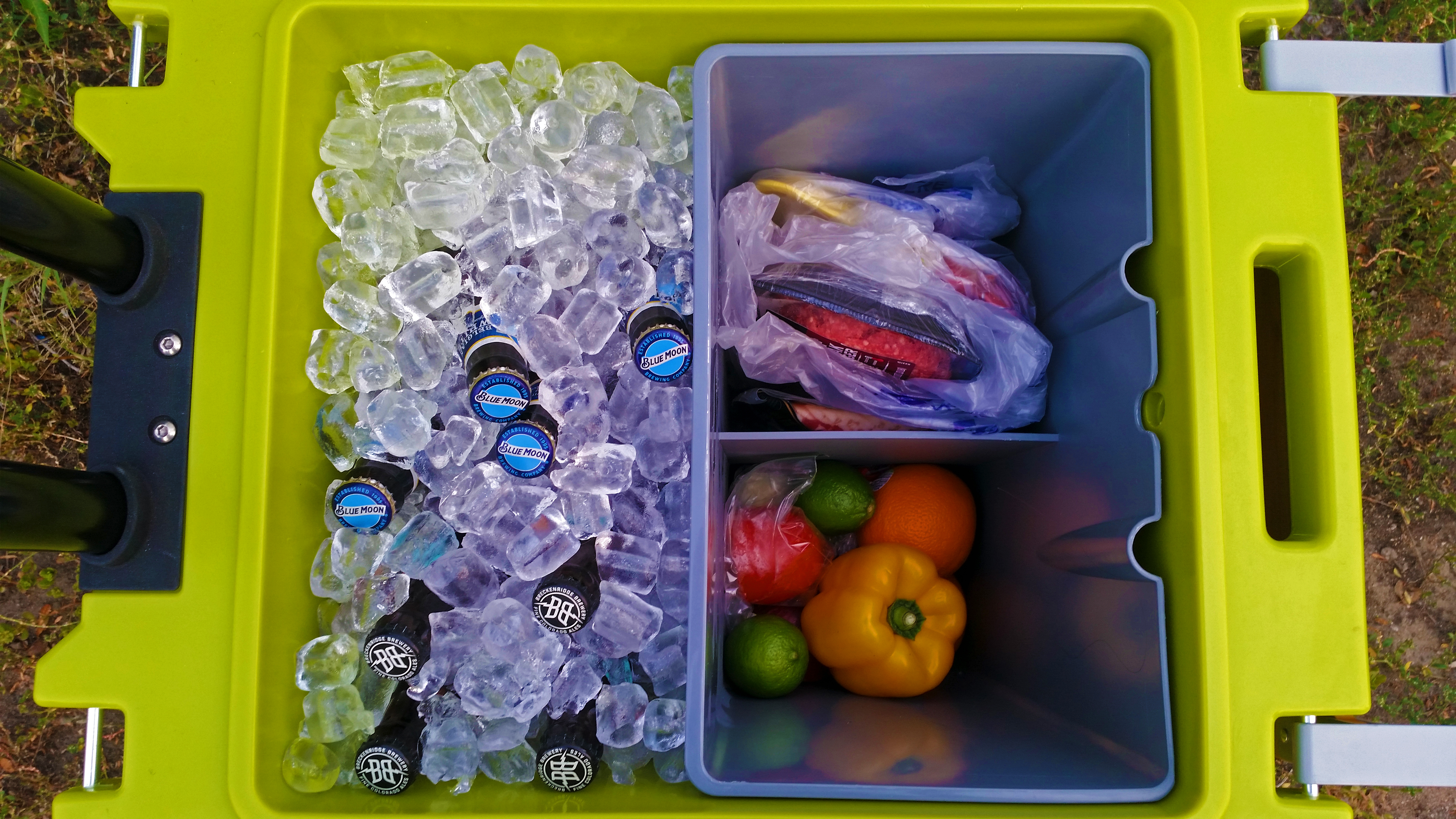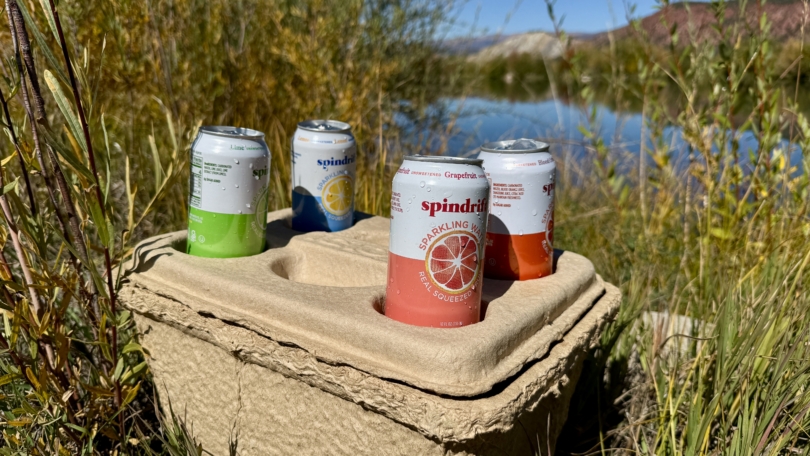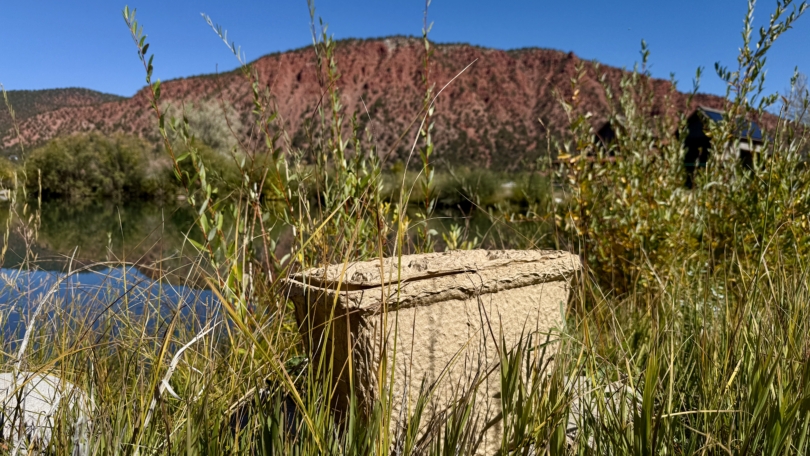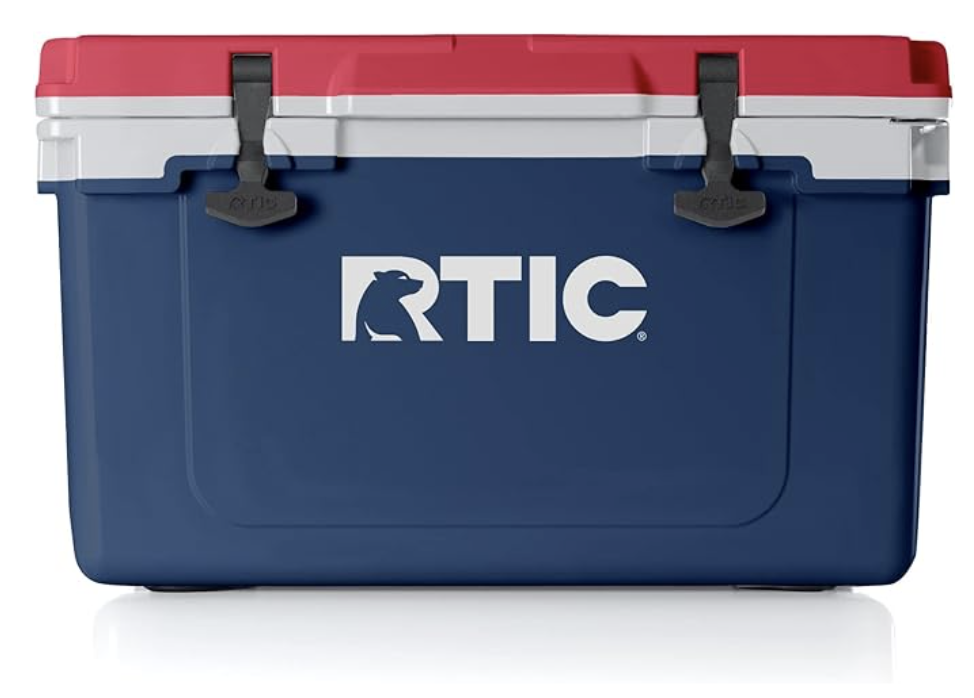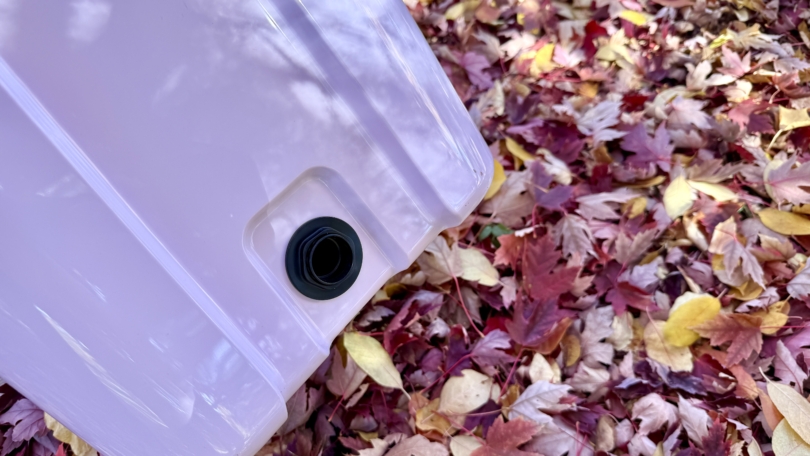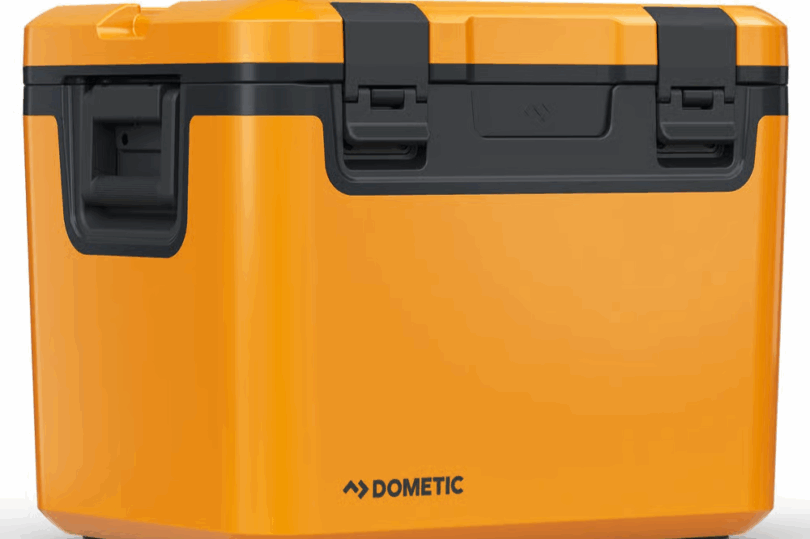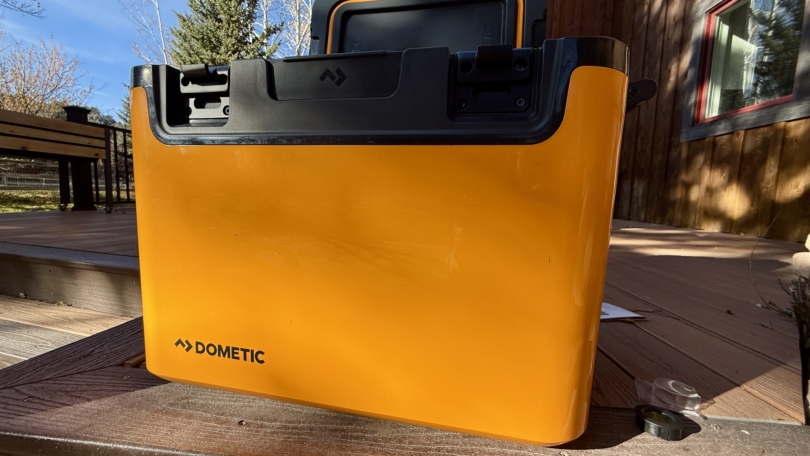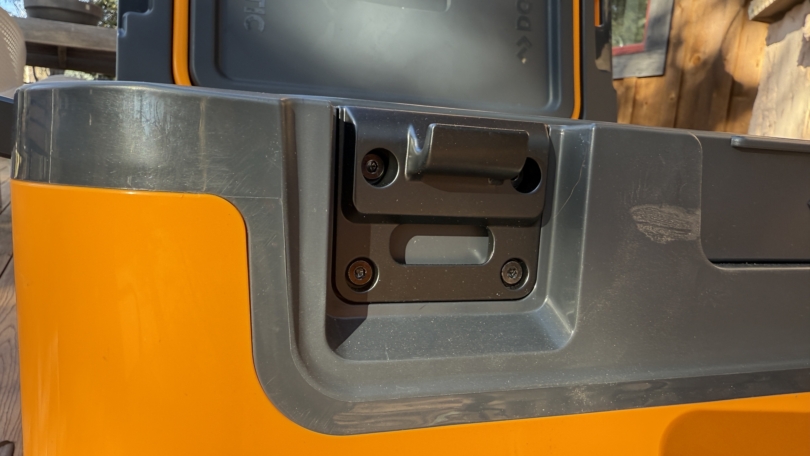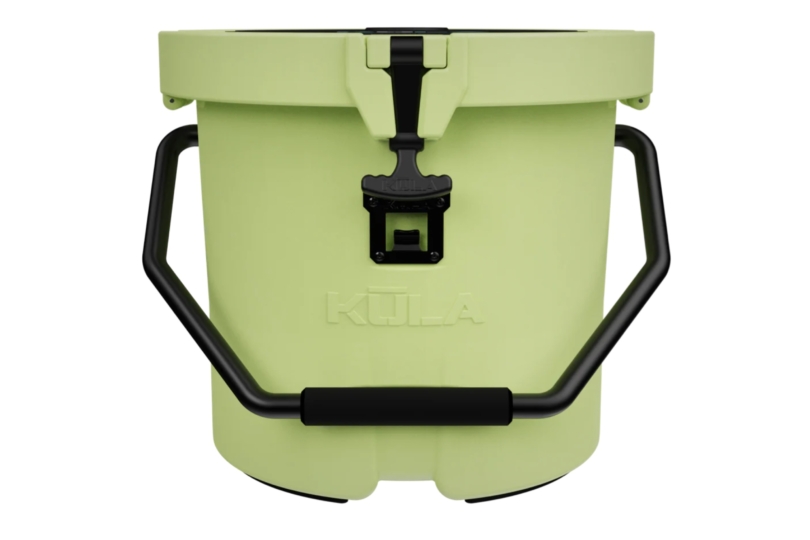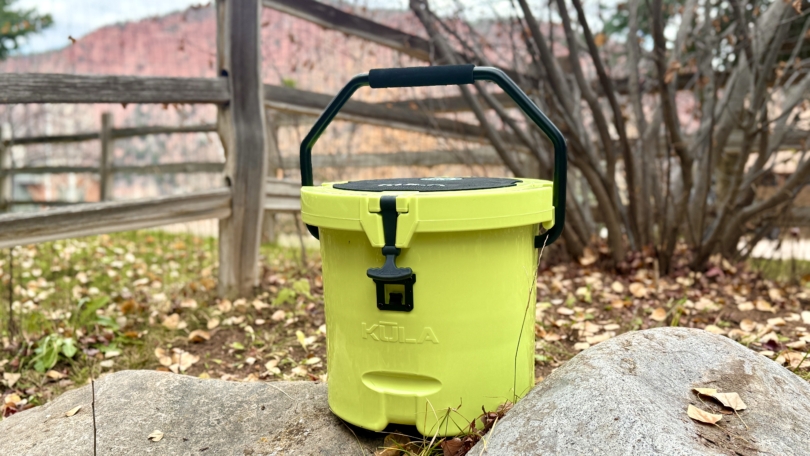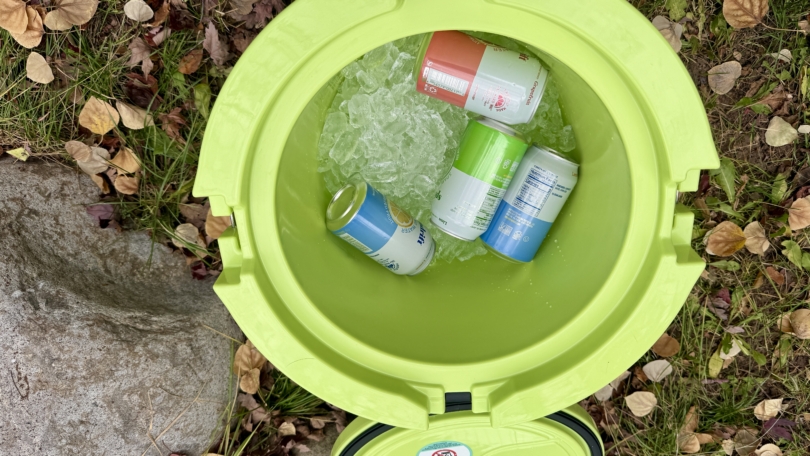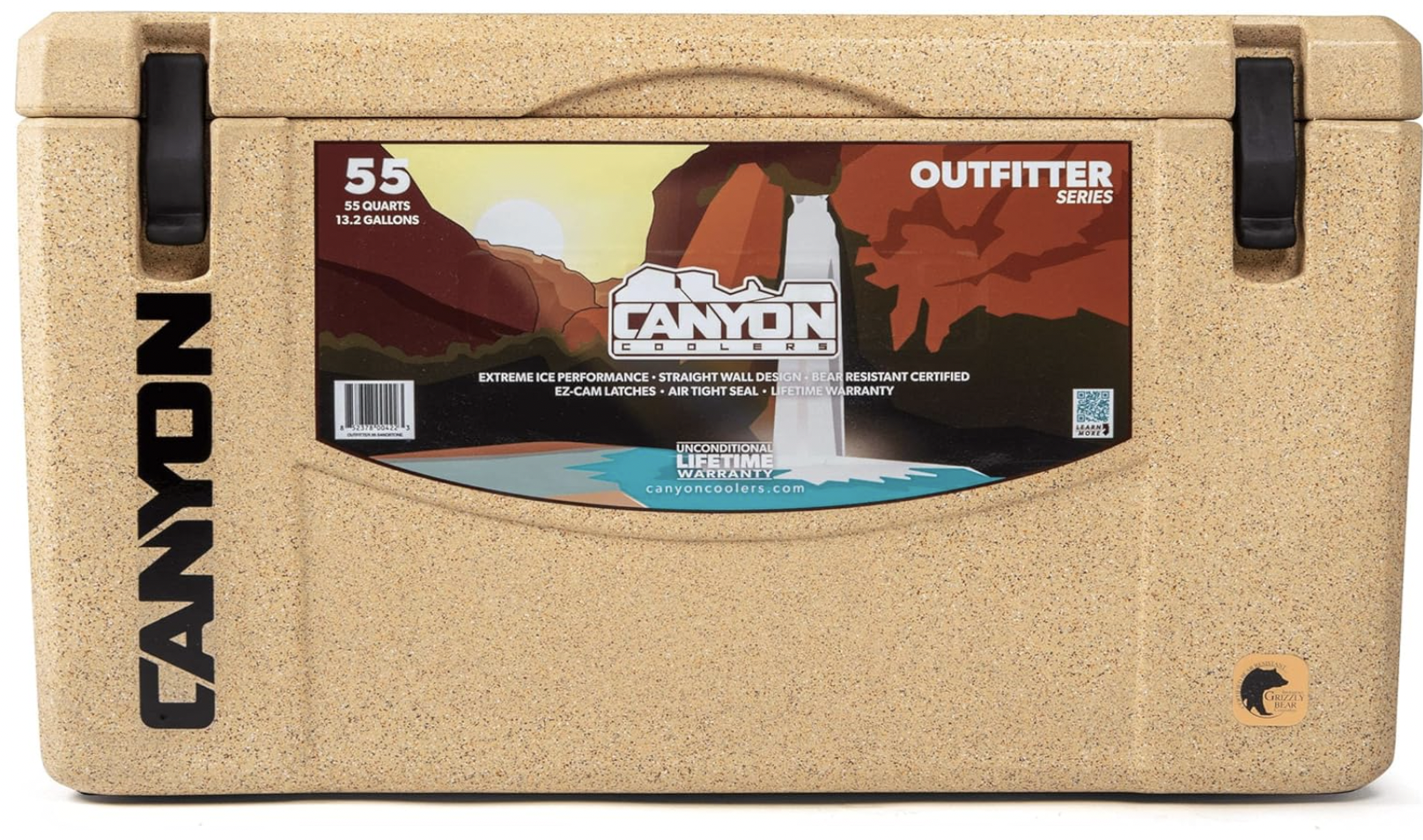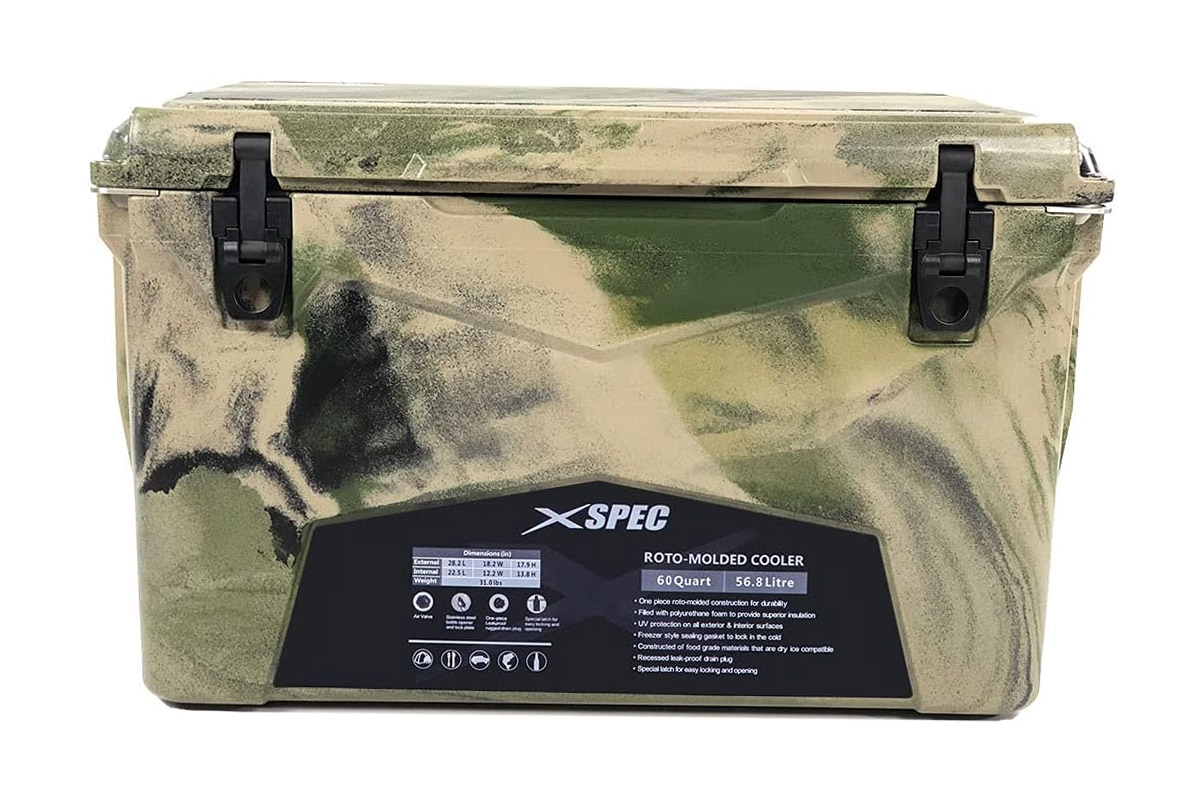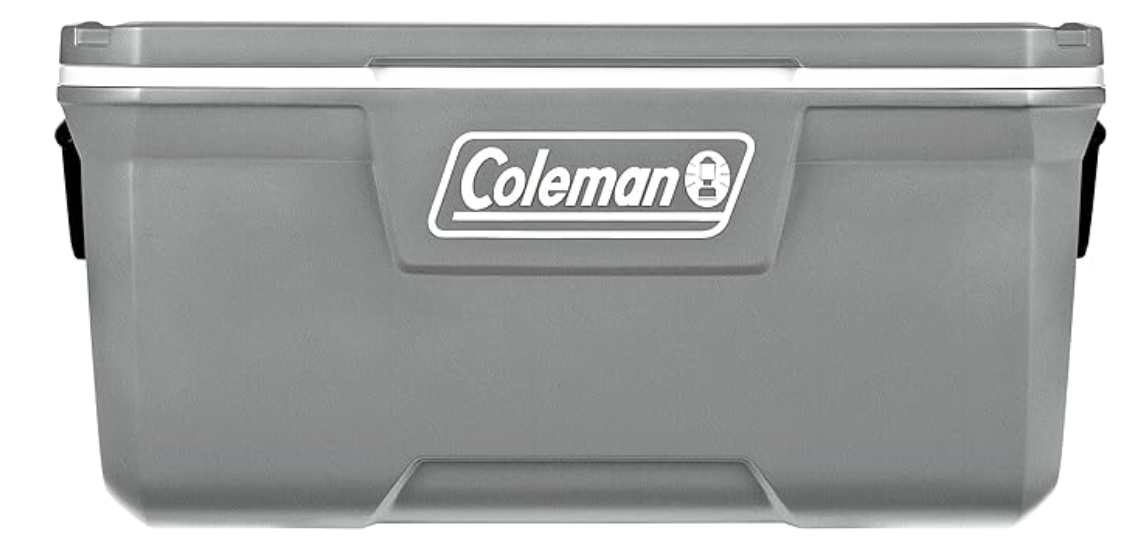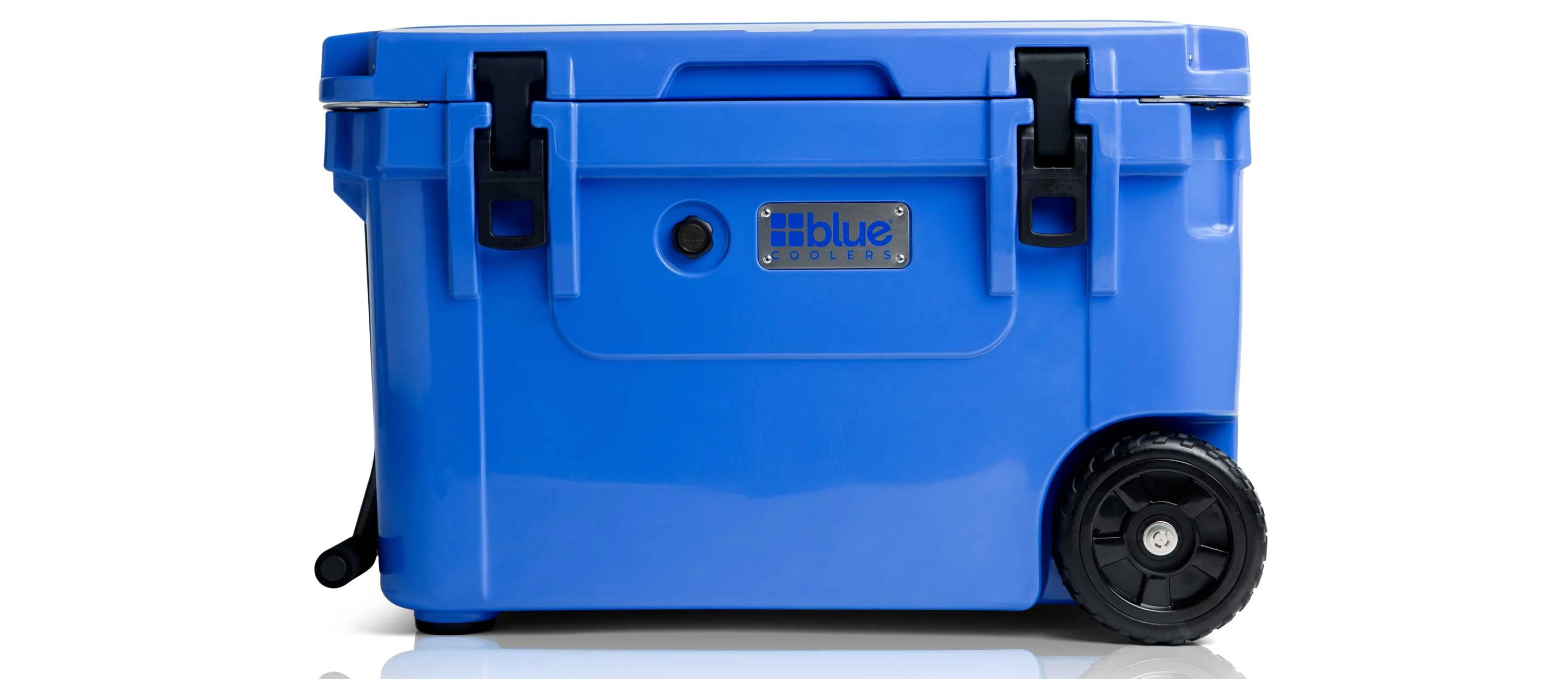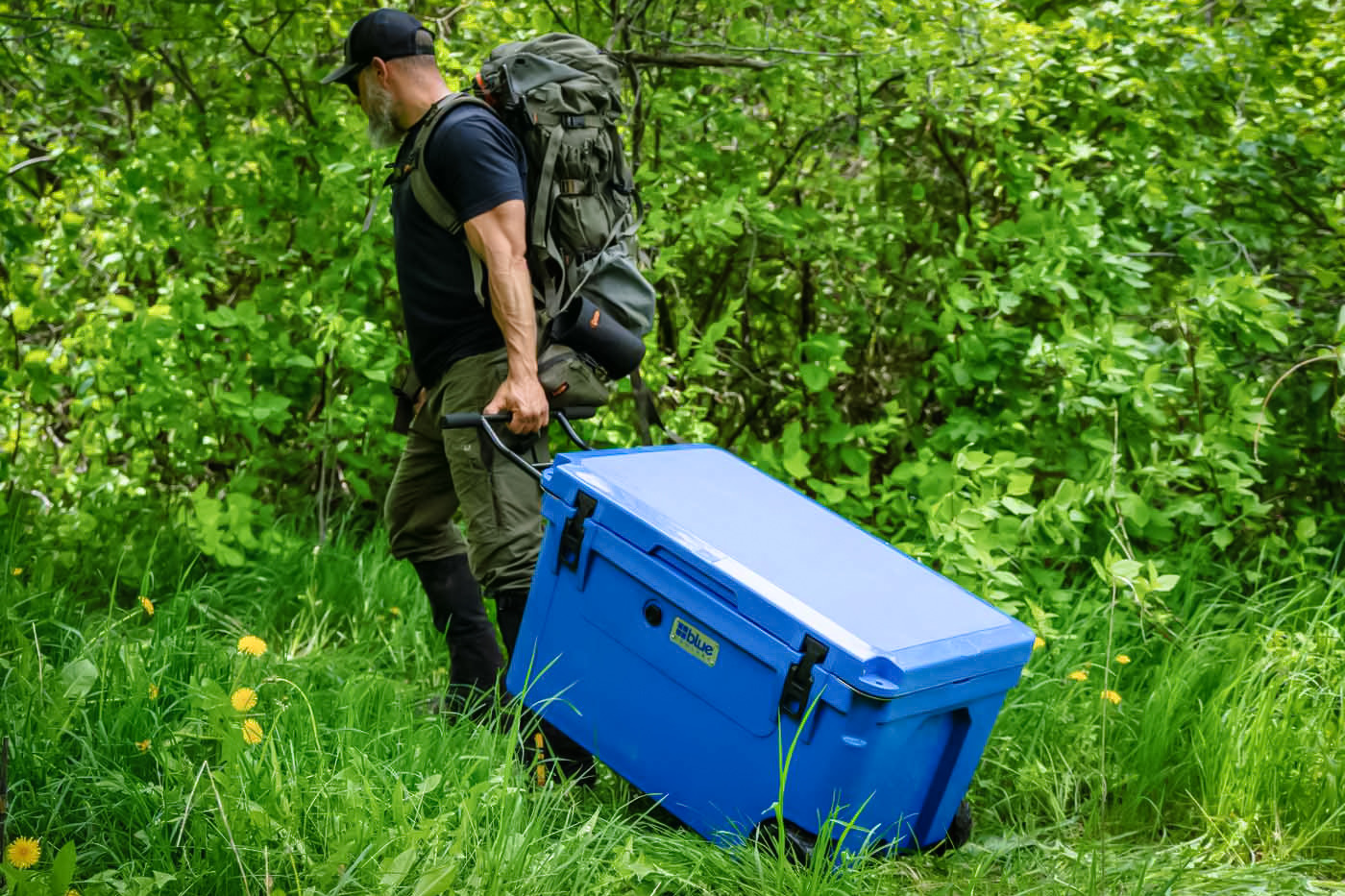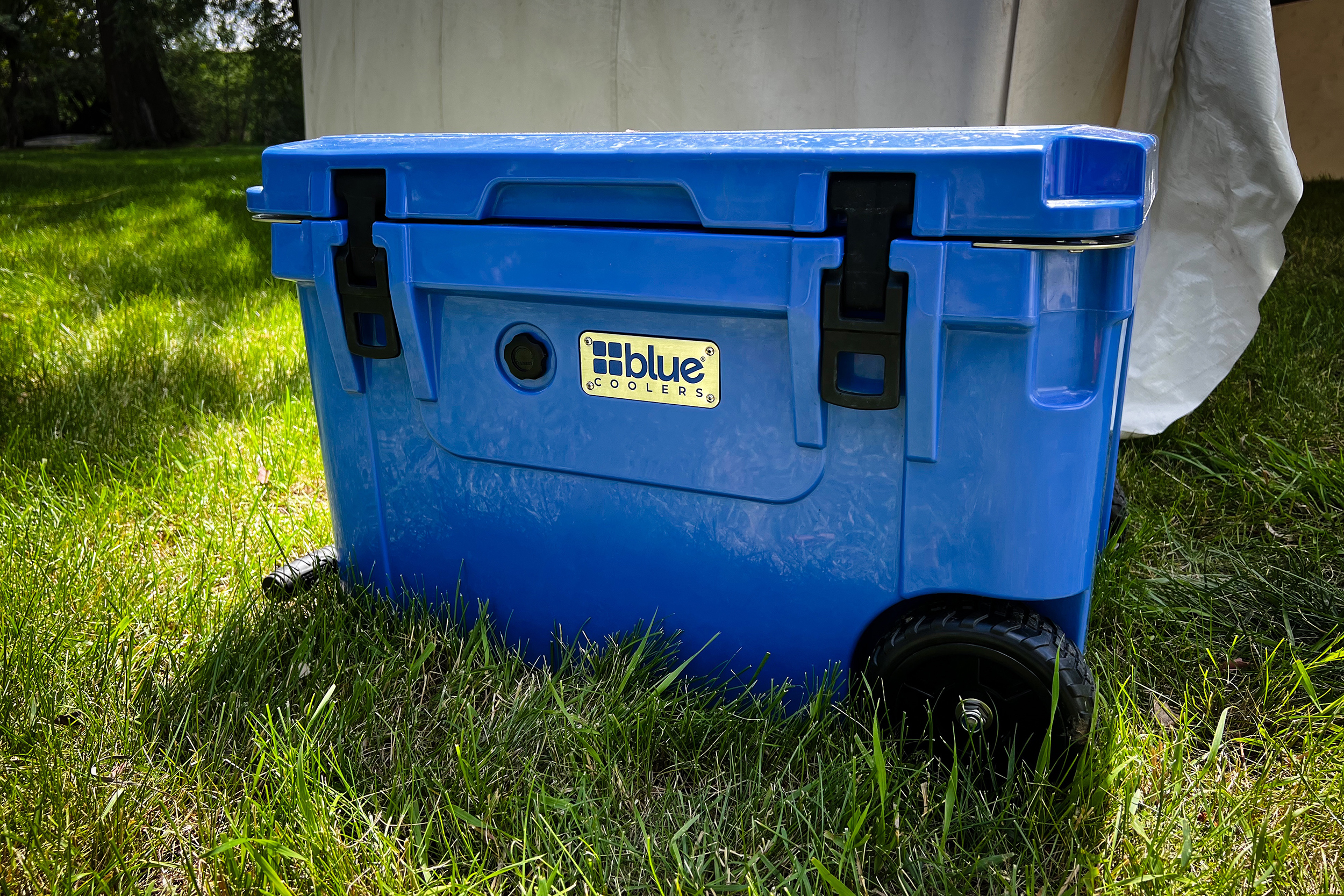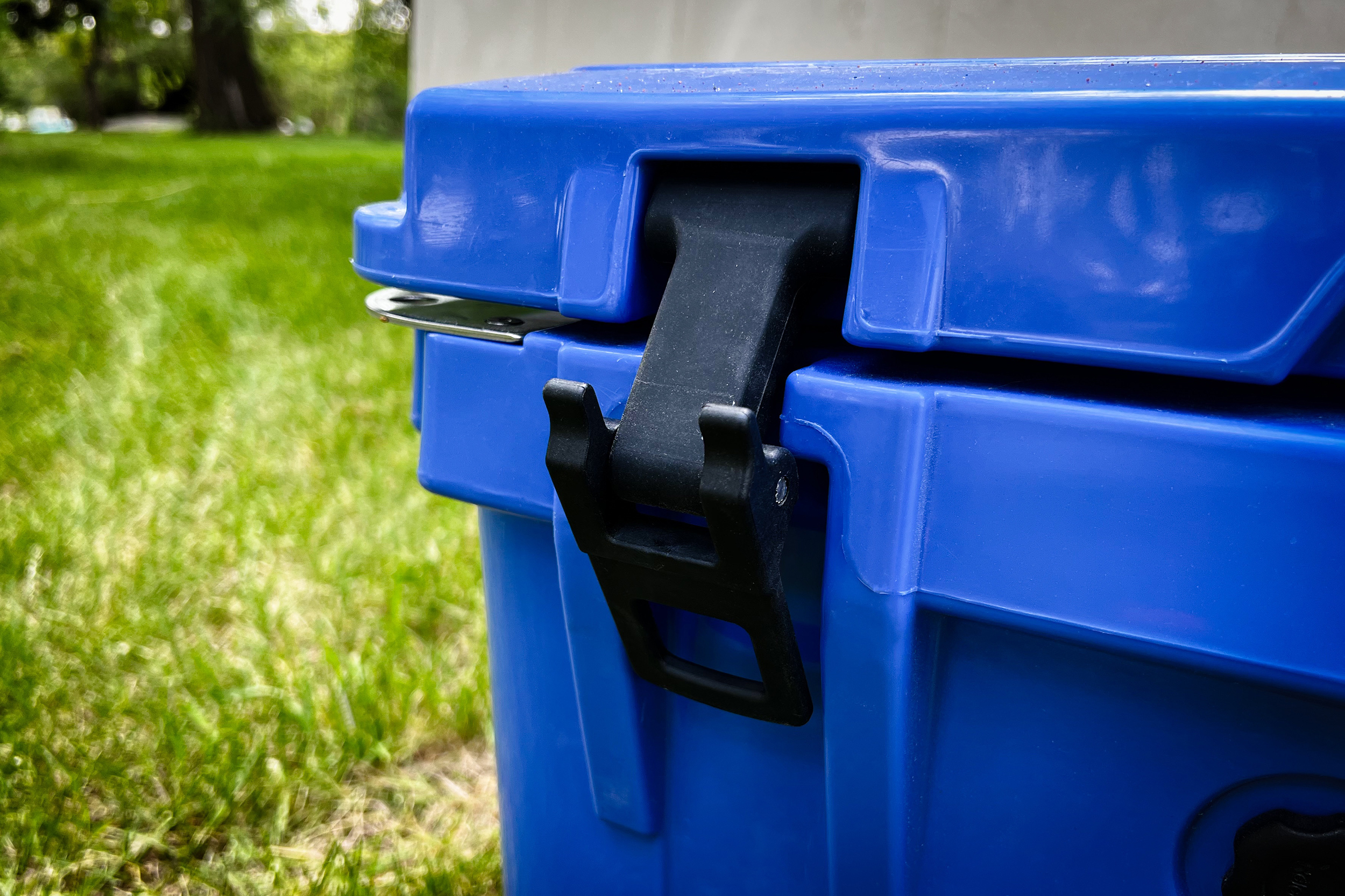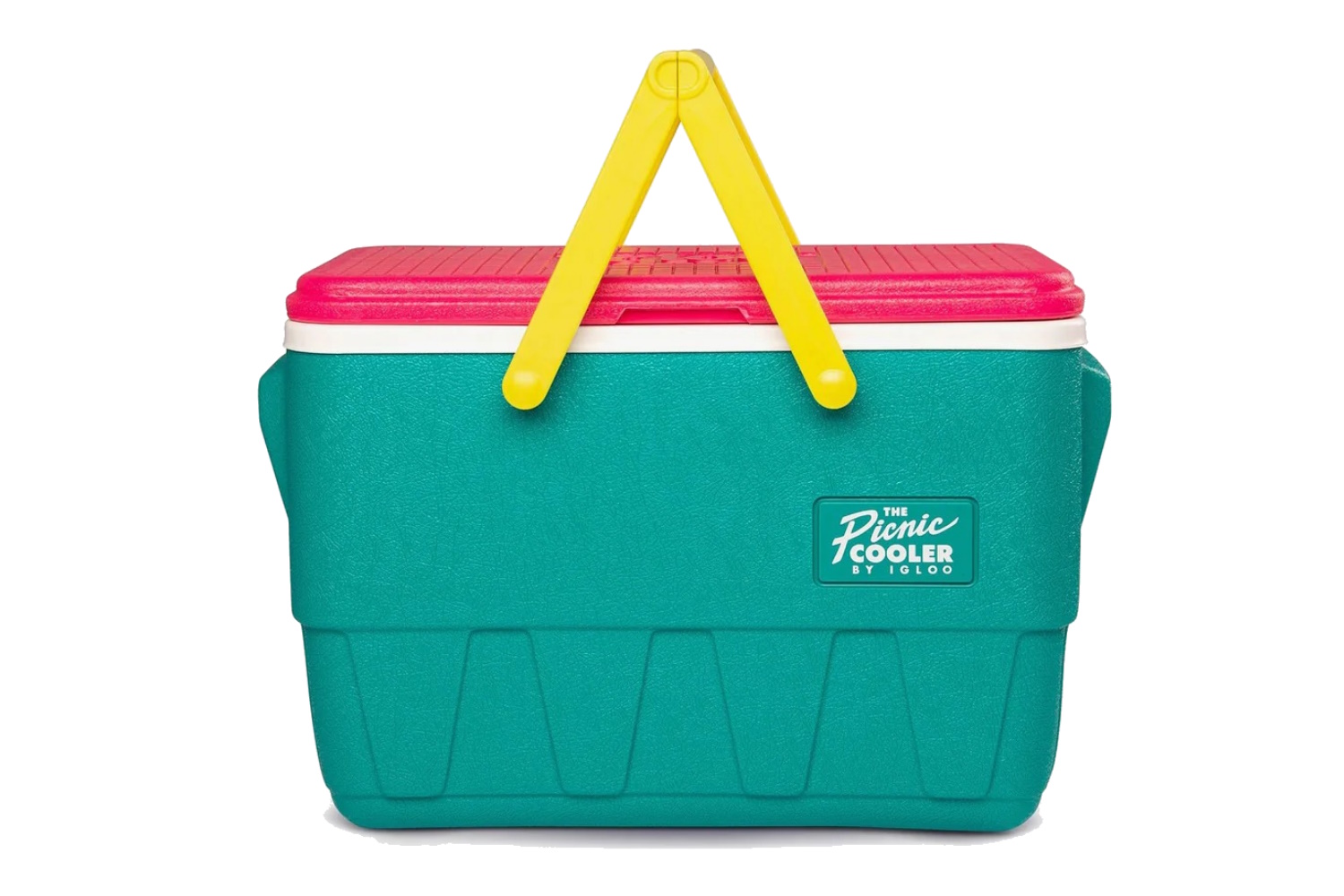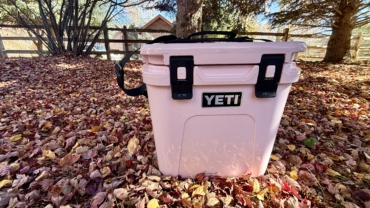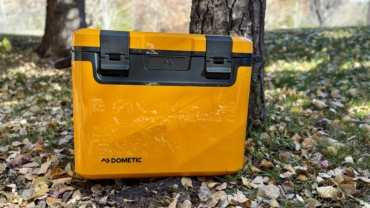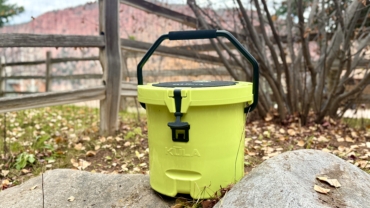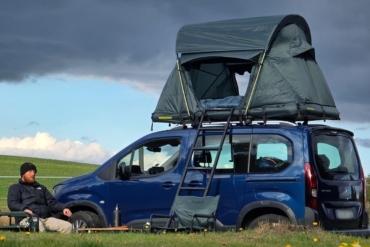Whether you’re headed to the beach or a backyard barbecue, finding the best cooler means balancing ice retention, durability, and price. Lucky for you, we’ve tested dozens of coolers in real-world scenarios to help you find the right pick.
We’ve put coolers through the wringer: loading them with ice and drinks, hauling them on camping trips, stashing them in hot cars, and dragging them along to swimming holes. Standouts include the indomitable YETI Tundra 45, which continues to set the standard for durability and multiday performance, and the new Igloo Recool, a compostable cooler made from recycled paper pulp that offers a sustainable alternative for shorter outings.
Every cooler we field test also goes through a standardized ice retention test, giving us objective results to compare alongside our real-world use. From premium hard-sided builds to lightweight, eco-friendly options, we dig into cooling performance and accessories to help you choose the right one for your next adventure.
Editor’s note: As of December 1, 2025, we’ve added the Dometic Recon Cooler to the guide. This thoughtfully-designed ice chest won us over with useful details like a rubberized surface, a magnetic drain spout holder, and dual-sided opening. As with all other products included, we put this cooler through our rigorous ice retention test to see how it stacks up against the rest.
The Best Coolers of 2025-2026
YETI Tundra 45
-
Ice Retention
9.5
-
Build Quality
9.5
-
Portability
9.0
-
Capacity and Organization
9.0
- Capacity: 37 quarts
- Materials: Rotomolded polyethylene/urethane foam insulation
- Dimensions: 25.75" x 16.125" x 15.4"
- Weight: 23 lbs.
Pros
- Rotomolded design
- Retained ice for the full 10 days of testing
- Dry goods basket included
- IGBC-certified
Cons
- Expensive
- Heavy
Igloo ECOCOOL
-
Ice Retention
8.0
-
Build Quality
5.5
-
Portability
8.0
-
Capacity and Organization
7.0
- Capacity: 52 quarts
- Materials: Recycled post-consumer resin
- Dimensions: 24.95" x 14.58" x 15.21”
- Weight: 9.84 lbs
Pros
- Inexpensive
- Ultra lightweight
- Made with post-consumer plastic
Cons
- Lower quality insulation
- No drain plug
- Low durability
RovR RollR 45 Wheeled Cooler
-
Ice Retention
8.0
-
Build Quality
8.5
-
Portability
9.5
-
Capacity and Organization
8.0
- Capacity: 45 quarts
- Materials: Plastic/polyeurethane foam
- Dimensions: 22.5” x 21” x 20.5”
- Weight: 37 lbs.
Pros
- Big, sturdy wheels for easy transport
- Comes with removable dry bin
- Compact but still has decent capacity
Cons
- Expensive
- Very heavy
- Ice doesn’t last as long because there is less room for ice
Igloo Recool 16 Qt. Cooler
-
Ice Retention
5.0
-
Build Quality
5.0
-
Portability
9.5
-
Capacity and Organization
8.0
- Capacity: 16 quarts
- Materials: Recycled paper and AKD (alkyl kitene dimer)
- Dimensions: 15" x 11" x 11.38"
- Weight: 1.6 lbs.
Pros
- Compostable and biodegradable materials
- Ultra-lightweight
- Far more durable than expected
- Delightfully affordable
Cons
- Decent ice retention but still limited compared to pricier, hard-sided options
- Holds fewer cans than reported
RTIC Ultra-Light Hard Cooler
-
Ice Retention
8.0
-
Build Quality
8.0
-
Portability
8.0
-
Capacity and Organization
8.0
- Capacity: 52 quarts
- Materials: Injection-molded plastic
- Dimensions: 27.01” x 17.28” x 16.54”
- Weight: 31 lbs
Pros
- Lightweight
- Affordable
- Two drain plugs
- Good ice retention
Cons
- Still less ice retention than the rotomolded Yeti or Orca
- Injection-molded therefore less durable than rotomolded models
YETI Roadie 24 2.0
-
Ice Retention
8.5
-
Build Quality
9.5
-
Portability
8.0
-
Capacity and Organization
7.5
- Capacity: 24 qts.
- Materials: Rotomolded polyethylene and pressure-injected polyurethane foam
- Dimensions: 17.4" x 16.6" x 14.1"
- Weight: 13 lbs., 1.6 oz.
Pros
- Great insulation
- Solid ice retention that superseded YETI's claims
- New carrying strap makes the 2.0 much easier to tote around
- New drain plug is a huge upgrade
Cons
- Pricey, especially for its size
Dometic Recon Hardside 41L
-
Ice Retention
7.5
-
Build Quality
8.0
-
Portability
8.5
-
Capacity and Organization
8.5
- Capacity: 41 L (43.3 qts.)
- Materials: Plastic/polyurethane foam
- Dimensions: 22" x 18" x 16.5"
- Weight: 25 lbs., 2 oz.
Pros
- Square design makes packing and stacking easy
- Lighter than rotomolded coolers in its class
- Tons of useful design features
- Interior capacity is spacious and as stated
Cons
- Ice retention isn't as good as a rotomolded cooler
- Expensive
More Coolers, Field Tested
The following coolers didn’t make the top of our list, but we’ve included them for their unique features or superior ice retention, and a few are great budget alternatives.
-
Ice Retention
7.0
-
Build Quality
8.5
-
Portability
7.0
-
Capacity and Organization
8.0
- Capacity: 20 qts.
- Materials: Rotomolded plastic
- Dimensions: 16.75″ W × 14.25″ H
- Weight: 13 lbs.
Pros
- Highly versatile since it's built to also be a seat, can hold a fishing rod, etc.
- Tons of useful features
- Rotomolded construction is quite durable
Cons
- Ice retention isn't as good as other premium coolers
- Slightly awkward to carry
-
Ice Retention
8.0
-
Build Quality
7.5
-
Portability
7.5
-
Capacity and Organization
8.5
- External dimensions: 23.94" L x 17.07" W x 18.78" H
- Internal dimensions: 13.3" L x 11.57" W x 9.7" H
- Drawer dimensions: 9.8" L x 10.8" W x 3" H
- Capacity: 48 12-oz. cans (only); 28 cans w/15 lbs. ice
- Weight: ~20 lbs.
Pros
- Dry Zone storage helps separate and protect food items
- Perfect size for single-day events
- Competitive ice retention performance
Cons
- Do not forget items left in drawer
- Cleaning drawer is a necessity
- Higher end price
-
Ice Retention
8.5
-
Build Quality
7.5
-
Portability
7.0
-
Capacity and Organization
8.0
- Capacity: 55 quarts
- Materials: Rotomolded kayak plastic with pressure-injected foam insulation
- Dimensions: 28.5 x 15.5 x 16.75
- Weight: 26 lbs
Pros
- Rotomolded construction
- Easy-to-use latches
- Light for its size
Cons
- Hard to carry for one person when fully loaded
- Easy-to-use latches don’t seal in air as well as other coolers we tested
- Not IGBC certified
-
Ice Retention
8.5
-
Build Quality
7.5
-
Portability
7.0
-
Capacity and Organization
8.0
- Capacity: 60 quarts
- Materials: Rotomolded body and polyurethane insulation
- Dimensions: 28.2" x 17.9" x 18.2"
- Weight: 31 lbs.
Pros
- Lots of features
- Drain plug with tether
- Rotomolded design
Cons
- Not IGBC-rated
- Heavy
- Latches not as airtight as other brands
-
Ice retention
8.5
-
Build Quality
7.0
-
Portability
5.0
-
Capacity and Organization
7.5
- Capacity: 120 quarts
- Materials: Injection-molded plastic
- Dimensions: 37.9” x 19” x 17.95”
- Weight: 20.7 lbs.
Pros
- Inexpensive
- Large capacity
- Lightweight
Cons
- No wheels
- Requires two people to carry when loaded
- Cheap materials
-
Ice Rention
8.5
-
Build Quality
8.0
-
Portability
8.0
-
Capacity and Organization
7.5
- Collapsible Grab-N-Go Handle:
- All-terrain wheels:
- Airtight gaskets and seals:
- Tie-down slots:
- Utility port:
- Dry ice compatible:
- Chrome-plated lockable lid system with built-in bottle opener:
- Non-skid feet:
- Rapid drain system:
- Dry basket & divider-ready design:
Pros
- Keeps ice just as long (if not longer) than competition
- Easy to move around, even when full
- Latches securely
- Nice chrome-plated corner details
- Release port for draining while closed
Cons
- Plug not attached
- Latches get in the way of closing
-
Ice Retention
6.5
-
Build Quality
7.0
-
Portability
9.0
-
Capacity and Organization
8.0
- Capacity: 25 quarts
- Materials: Injection-molded plastic
- Dimensions: 13" x 20" x 13"
- Weight: 5.5 lbs.
Pros
- Super-portable
- Budget-friendly
Cons
- Short ice retention due to small size
Cooler Comparison Chart
| Cooler | Price | Capacity | Weight | Materials |
| YETI Tundra 45 | $325 | 37 quarts | 23 lbs. | Rotomolded polyethylene/urethane foam insulation |
| Igloo ECOCOOL | $60 | 52 quarts | 9.8 lbs. | Recycled post-consumer resin |
| RovR RollR 45 Wheeled Cooler | $275 | 45 quarts | 37 lbs. | Plastic/polyurethane foam |
| Igloo Recool 16qt Cooler | $10 | 16 quarts | 1.6 lbs. | Recycled paper and AKD |
| RTIC Ultra-Light Hard Cooler | $219 | 52 quarts | 31 lbs. | Injection-molded plastic |
| YETI Roadie 24 2.0 | $250 | 24 quarts | 13.13 lbs. | Rotomolded polyethylene/urethane foam insulation |
| Dometic Recon 41L Cooler | $325 | 43.3 quarts | 25.13 lbs. | Plastic/polyurethane foam |
| Bote Kula 5 Magnepod Cooler | $299 | 20 quarts | 13 lbs. | Rotomolded plastic |
| Ninja FrostVault Cooler | $200 | 30 quarts | 20 lbs | Plastic |
| Canyon Coolers Outfitter 55 | $300 | 55 quarts | 26 lbs. | Rotomolded kayak plastic with pressure-injected foam insulation |
| Xspec Pro 60 Quart Cooler | $230 | 60 quarts | 31 lbs. | Rotomolded body and polyurethane insulation |
| Coleman 316 Series Chest Cooler | $110 | 120 quarts | 5.5 lbs. | Injection-molded plastic |
| The Blue Coolers Ice Vault | $350 | 60 quarts | 36.5 lbs. | Rotomolded polyethylene/urethane foam insulation |
| Igloo 25-Quart Picnic Cooler | $55 | 25 quarts | 5.5 lbs. | Injection-molded plastic |
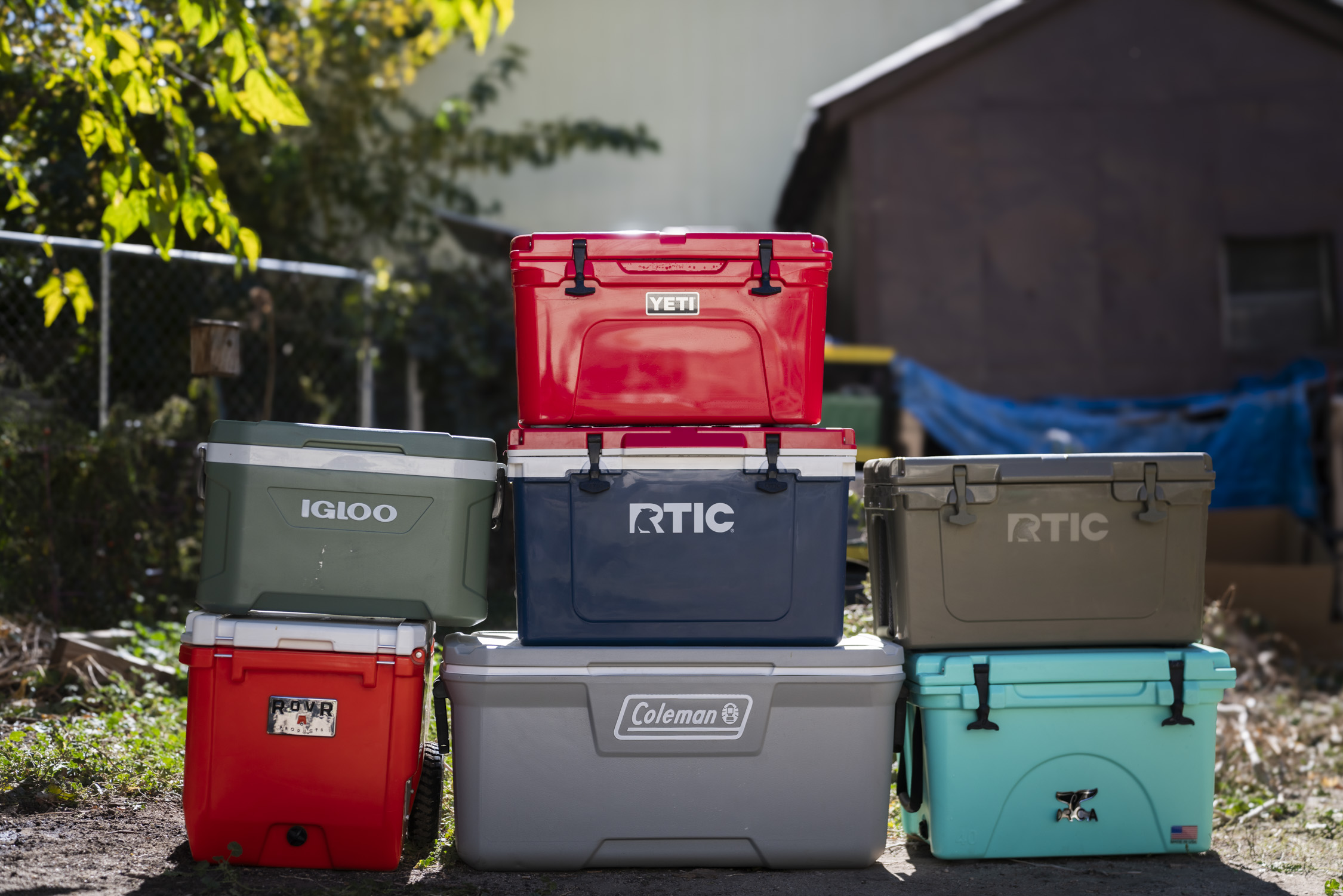
How We Tested Coolers
Our expert gear testers have been reviewing coolers since 2014, meticulously researching dozens of the best coolers on the market to continuously update this review. This is an extensive look at seven of the best coolers you can find today.
Our Expert Testers & Testing Grounds
Contributor Heather Balogh Rochfort is an avid outdoor enthusiast based in Colorado who spends most of her waking hours hiking, biking, camping, trail running, or skiing. Coincidentally, she also loves food so toting a cooler along on all of her adventures is a given.
Miya Tsudome brings over 3 years of gear reviewing experience combined with over a decade of being a serious outdoor enthusiast to help bring this current review to life. Having spent many months living out of her car in pursuit of rock climbing adventures all over the country, she knows that having a good cooler during the hot summer months can make a world of difference.
Our Testing Process
Each product was tested over several weeks, and taken out on different occasions for real-world applications — overnight camping trips, backyard barbecues, and day trips to the local swimming hole. The most recent lineup of coolers was tested in October in the high desert of Bishop, Calif. The average temperature was in the high 70s to low 80s for the majority of the month.
Each cooler was rated based on its performance in our ice retention test, its insulation and materials, durability, extra features, weight, ease of transport, and ease of maintenance and cleaning. The coolers that ranked the highest in specific categories were assigned an award in our top picks.
Also, we did not include soft coolers, backpack coolers, or electric coolers in this test.
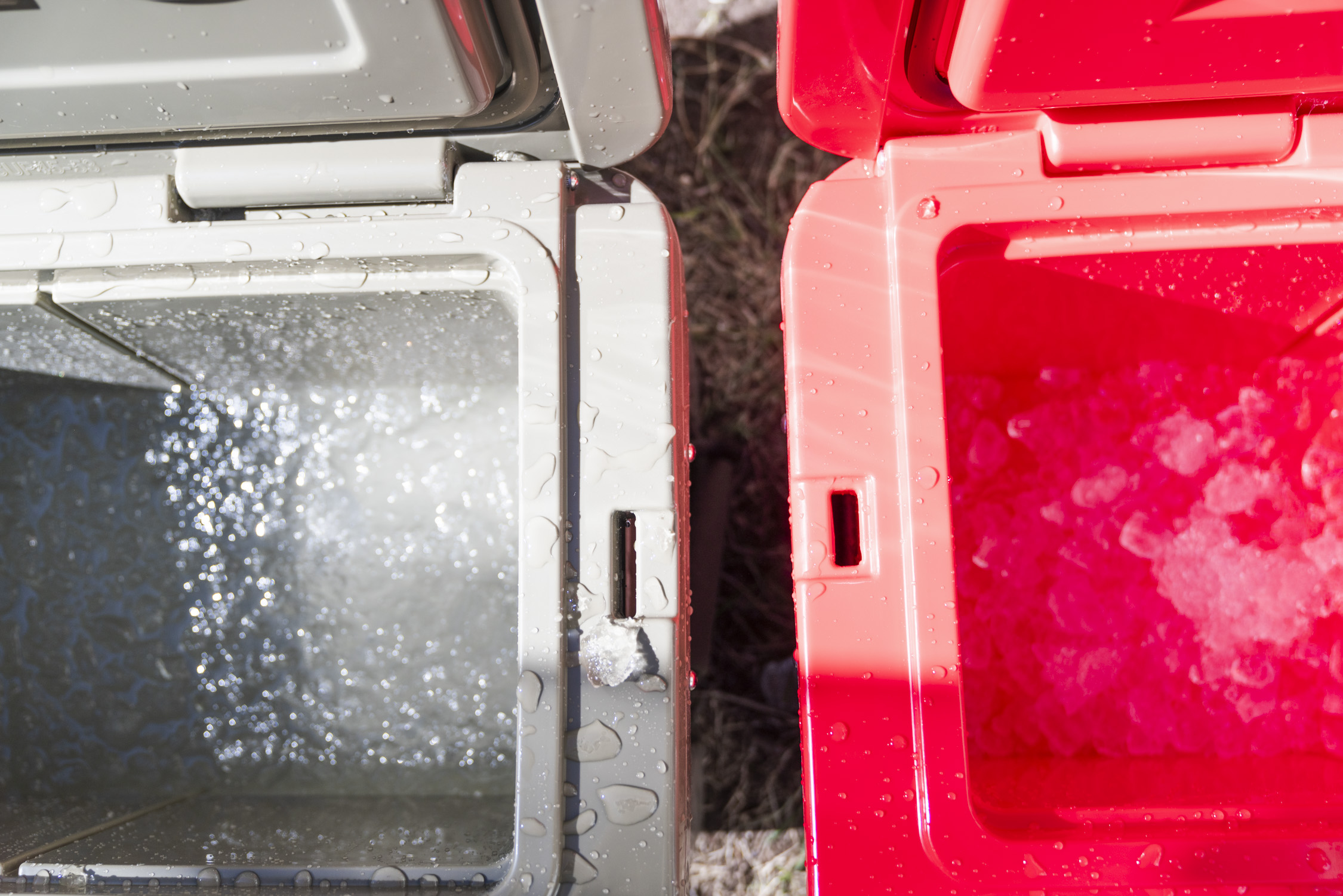
Ice Retention Test
For our ice retention test, we filled each cooler up 85% of the way with the same type of bagged, cubed ice. Each cooler stayed indoors before the test, to ensure that their starting temperatures were all about the same. It’s recommended to pre-chill a cooler for the best ice retention, we did not prechill any of the coolers to best mimic how we would actually use them.
For the actual test, we stored the coolers outside in an area that was mostly shaded during the day, with a few hours of direct sun exposure and temperatures that varied from 35 degrees overnight to 100 degrees in direct sun. This was also our idea of the best imitation of how these coolers would typically be stored outdoors.
Variables that can affect ice retention include the ice quantity, outside environment and temp, exposure and amount of sunlight, type of ice (crushed, block, cube, dry), airspace, and more. In order to find the best of the best coolers, it was crucial for us to do a direct comparison.
We checked each cooler’s ice retention/melt rate once a day and recorded the time and temp for each one. We also noted the time once each cooler’s ice was fully melted. The YETI Tundra 45 and the YETI Roadie 24 2.0 took first place, both retaining ice for the full 10 days. The Dometic Recon also held its own with a bit of lingering ice remaining after 10 days, albeit with cooler outside temperatures.
The RTIC Ultra-Light came in next, retaining useable ice for 8 days with interior temperatures 48 hours in at 29.2 degrees F and 31.2 degrees F.
While the Igloo ECOCOOL had an interior temperature of 34.6 degrees F at the 48-hour mark, it surprisingly still had some ice left inside after 10 days. The RovR RollR 45 only lasted 6 days with useable ice, but it also had the least amount of ice inside out of all the coolers due to the useable space.
In contrast, the Coleman 316 still held a large quantity of ice after 10 days. This is more so due to the amount of ice that it holds in its 120-quart interior rather than due to its insulation properties. More ice = more ice retention.
This test was not meant to be purely scientific, but rather to reflect the realistic use of a cooler outdoors and accurately compare cooler performance. To keep it fair, we made sure that all coolers were subjected to the same variables and criteria as much as possible.
It is worth mentioning that this test was not performed in the height of summer, but rather during a time when overnight temperatures dipped fairly low, causing the ice to melt much slower than if this test was done in July.
If you’re tired of ice and ok spending more money for an actual portable refrigerator, check out GearJunkie’s guide to the best Electric Coolers.
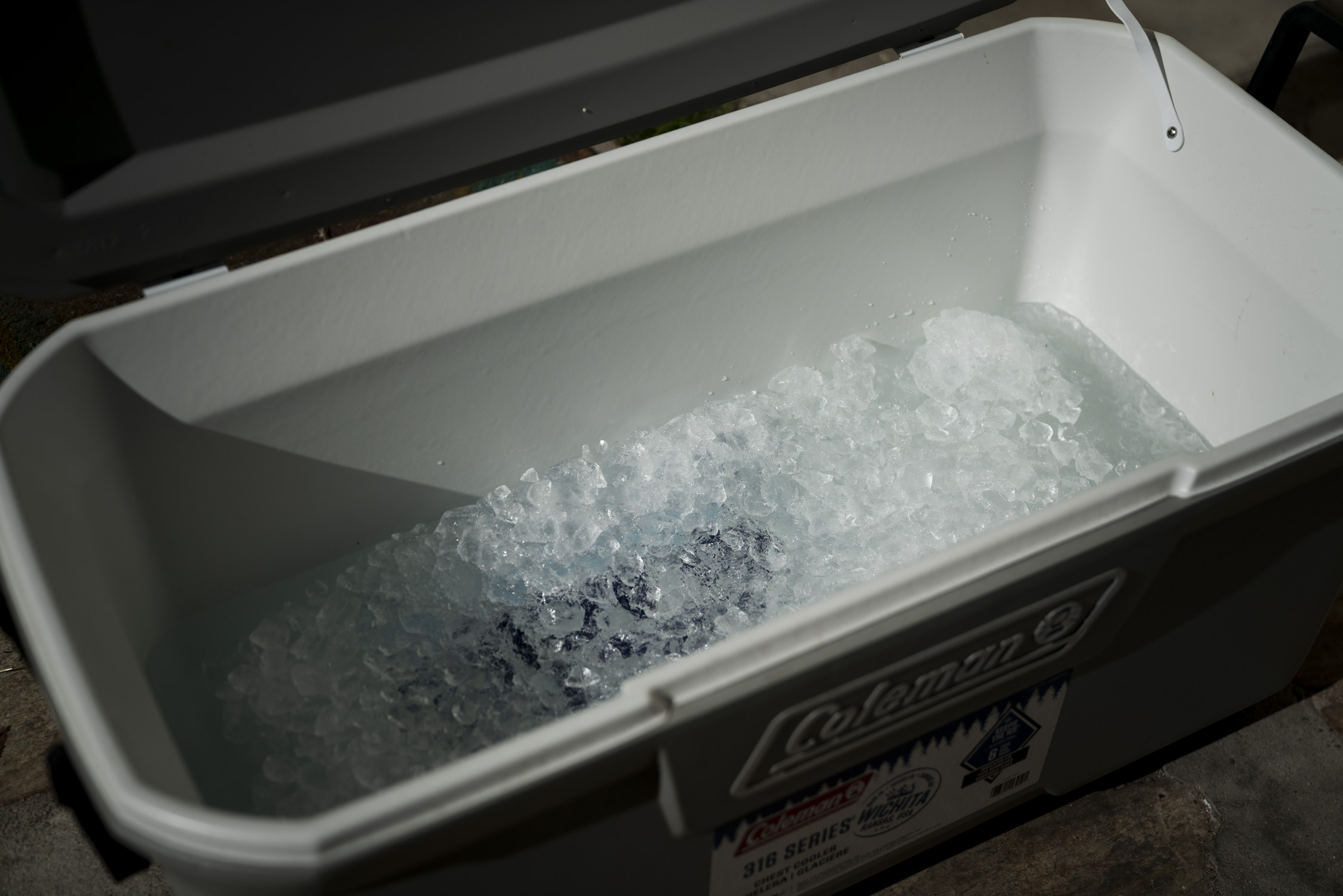
Our Cooler Rating System
When comparing coolers side by side, we break our evaluations into four key categories. This system provides a balanced look at performance, usability, and design, all while helping us determine which coolers stand out — and which ones melt under pressure.
Ice Retention
Ice retention is the most important measure of a cooler’s performance. We evaluate how long each model keeps ice solid in real-world conditions, including during road trips, camping weekends, and multi-day tests in fluctuating temperatures. Coolers that maintain low internal temps for several days (even when opened frequently) earn top marks here. For this metric, please reference our ice retention test (above).
Build Quality
A cooler’s durability often determines how long it will last. We look closely at construction methods (rotomolded or injection-molded) along with hinge strength, latch reliability, and gasket design. We also consider overall sturdiness, resistance to dents or warping, and how well the cooler stands up to heavy use in the field. A cooler earns bonus points for quality and durability if it is bear proof but that isn’t a requirement, nor is it always worth your hard-earned cash.
Portability
From quick tailgates to long hauls across camp, portability can make or break a cooler’s usability. We assess handle design, strap comfort, weight when fully loaded, and balance while carrying. Coolers that feel awkward or strain our arms lose points here, while those with ergonomic grips or smart strap systems get high marks.
Capacity and Organization
A cooler’s capacity isn’t just about volume; it’s about usable space. We look at how efficiently each model stores cans, bottles, and ice, and whether its internal layout makes access easy. Features like baskets, dividers, and wine-bottle-friendly heights earn extra credit for improving real-world organization and versatility.
Buyers Guide: How to Choose the Best Cooler
Cooling Performance
Insulation & Materials
Coolers have a long and storied history. From a humble beginning as a wooden box with an interior tin chamber invented by Thomas Moore Jr. in 1802, to the decently insulating styrofoam boxes that came from the World War II era, to the plastic exterior coolers we know today pioneered by the Coleman company, coolers have come a long way.
Historically, coolers have been made with interior and exterior shells of plastic, with hard foam in between. Many basic coolers are still made this way today, such as the Igloo ECOCOOL and the Coleman 316.
In 2006, two brothers named Roy and Ryan Seiders revolutionized the cooler market with their rotational molding or “rotomolding” design. This involves a heated plastic mold that is rotated continuously while powdered polyethylene is added to it to create a uniform thickness. They also pioneered the use of polyurethane instead of styrofoam as insulation, which created superior ice retention.
YETI was the company born from its design and is considered the gold standard in coolers today. Many companies have since adopted the rotomolding technique for their coolers. Now, a majority of premium coolers like the YETI Tundra 45 and the YETI Roadie 24 2.0 are rotomolded.

Coolers use a few different sorts of foam or petroleum-based insulation, typically double-walled. YETI employs its pressure-injected polyurethane foam, while Igloo uses its proprietary THERMECOOL insulating foam.
While rotomolded coolers offer the best ice retention and durability by far, they are also considerably more heavy and expensive. The trade-off for lighter, less expensive coolers, however, will be in their performance and durability.
More recently, manufacturers have introduced coolers made from recyclable or compostable materials. These models, such as the Igloo Recool Cooler, are built from molded paper pulp with plant-based binders instead of petroleum-derived foams. Their insulation is modest compared to plastic or rotomolded designs, but they offer a sustainable alternative to disposable Styrofoam chests. Best suited for short-term use like picnics, concerts, or day trips, compostable coolers trade multi-day ice retention for environmental responsibility.
Seals
The highest-performing coolers in our lineup all have heavy-duty rubber gaskets that work to seal their lids airtight. In order to keep your cooler as consistently cold as possible, you need to be able to trap that cold air inside and keep it closed.
The best coolers will implement the same materials and mechanisms as deep freezers will, with rubber gaskets that create airtight seals, and sturdy, thick latches that pull the lids tight. The Igloo ECOCOOL, the Igloo Recool and the Coleman 316 are the only coolers in our lineup that do not implement this feature.
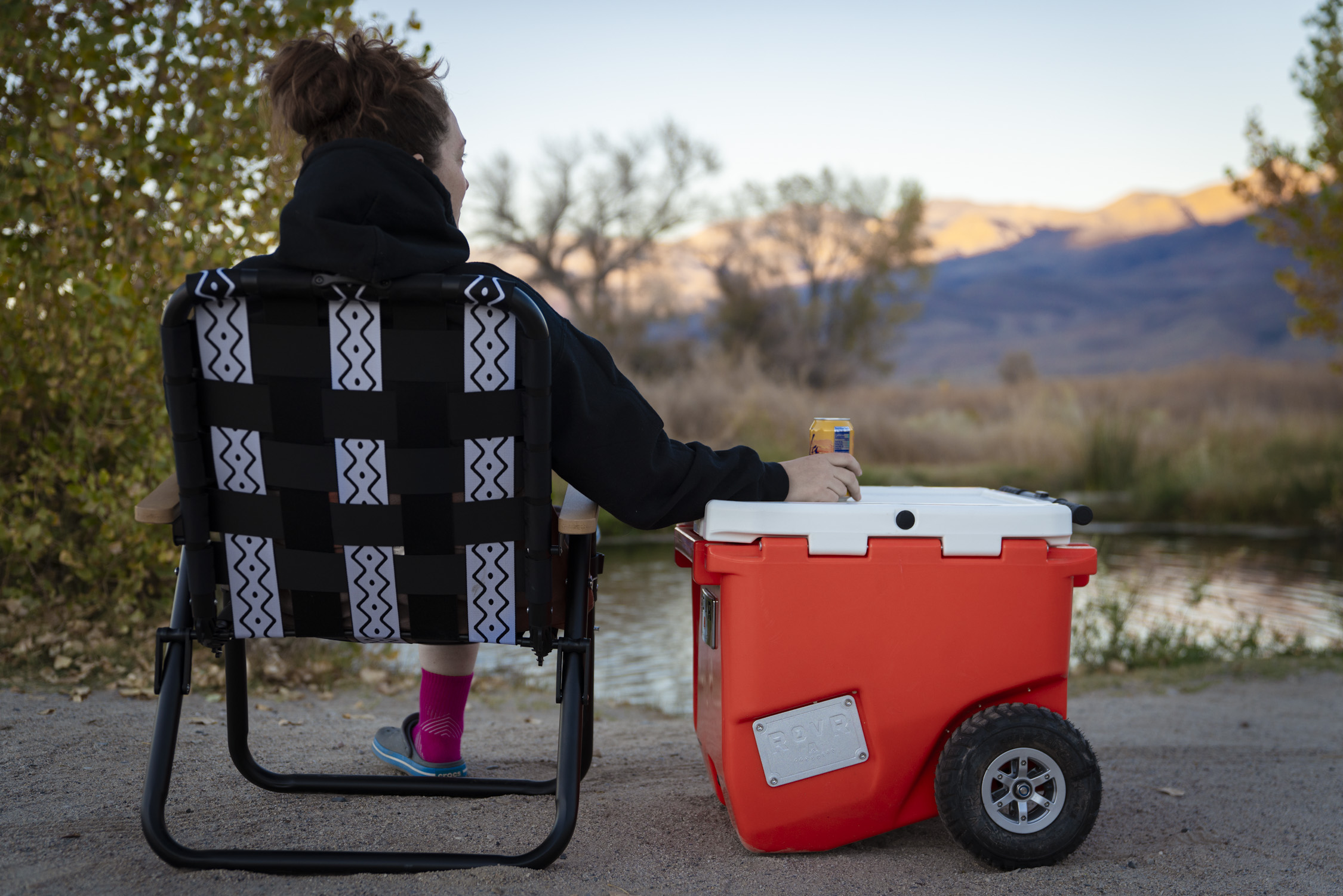
Exterior Color
Another thing to consider if you want the absolute best-performing cooler you can buy is the color you choose. When measuring the outside temperature of each cooler during our ice retention test, the lighter-colored coolers consistently had lower exterior temperatures. So although that dark grey cooler might be more your style, the white one might be the better choice. Options like the Bote Kula 5 are nice because they offer a wide variety of fun colors, so you can choose one that fits your personality and stays cool on hot days.
Size & Volume
The sweet spot volume of all the coolers we tested was a 40- to 45-quart cooler. This medium size is the most convenient, providing enough space for 3-5 days’ worth of food for one or two people, plenty of room for a few six-packs of cold drinks for a backyard barbecue.
In terms of the different sizes that each brand offers, 30- and 60-quart capacities are also popular. The largest cooler we tested was the Coleman 316. It can serve a purpose for large events or gatherings and is a good value for its size. On the flipside, the smallest cooler we tested is the Igloo Recool 16qt Cooler that is best suited for day-long activities like picnics or small gatherings with friends.
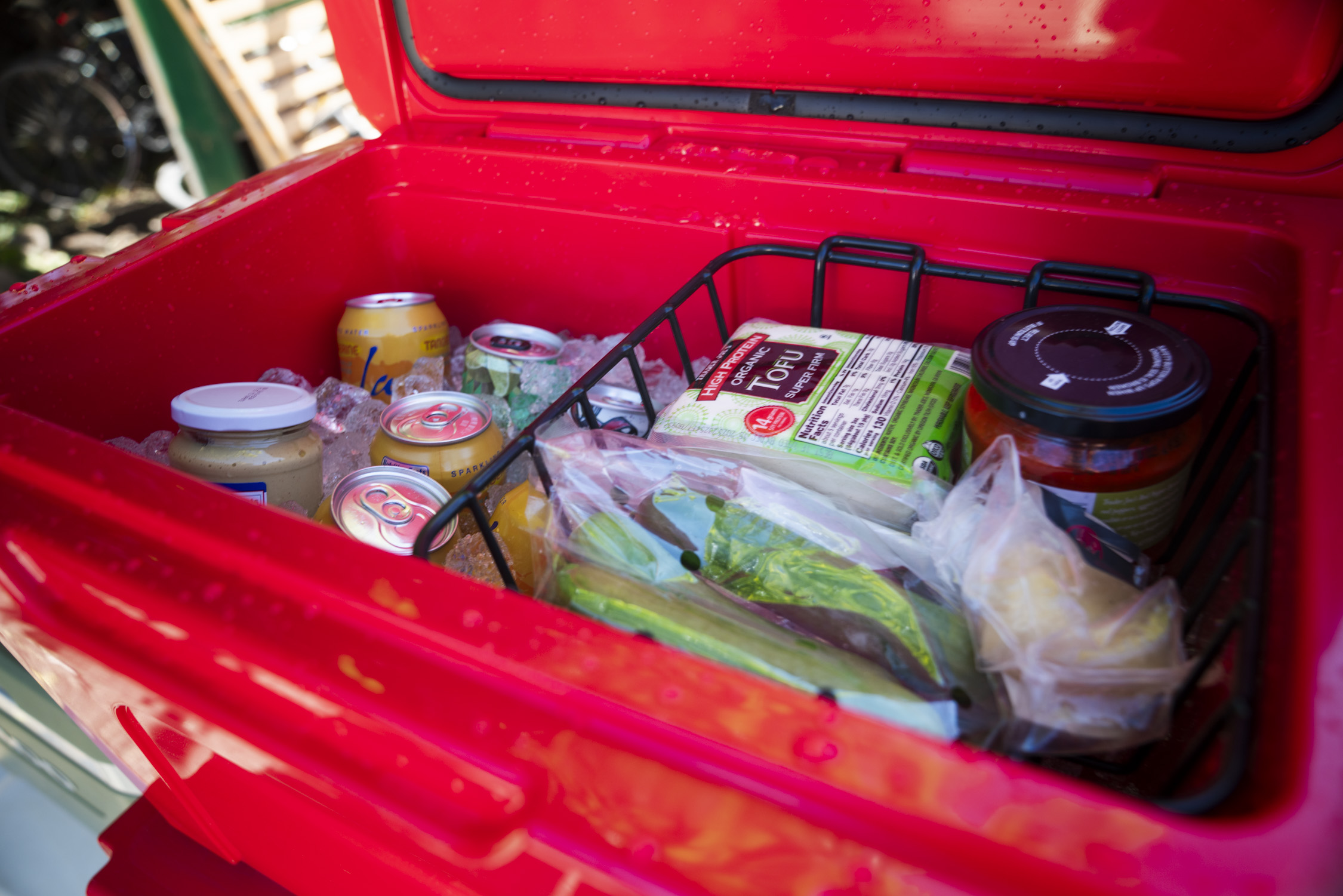
You’ll want to consider not only how much cooler space you may want for different adventures, but also consider a cooler’s dimensions. You don’t want to buy the perfect cooler only to find out that it doesn’t fit in your car when packed, or in a spot on your storage shelf. Most coolers are rectangular in shape, and can be easy to slide into car trunks and stack other things on top of.
Some coolers have wheels, like the RovR RollR 45, which, while making transport easier, can take up more room in a trunk or on a shelf. It’s also a good idea to think about the items you’ll be keeping cool and make sure those (maybe wine bottles or a coffee press for camping) fit the internal dimensions as well.
Weight
Weight is also an important consideration when choosing a cooler. Rotomolded coolers with their thick, 2 inches of insulation and durable outer plastic layer will be the heaviest cooler you can buy. Coolers like the YETI Tundra 45 all weigh between 23 and 30 pounds alone. The RovR RollR 45 weighs a whopping 37 pounds. Granted, it has wheels, which means transportation won’t be as difficult an affair.
The RTIC Ultra-Light Hard Cooler is a great innovation from RTIC that uses injection molding to create a lighter, midsized cooler. At 31 pounds, the 52-quart model is around the same weight as its 45-quart, rotomolded counterpart, resulting in a higher capacity for less weight.
The Igloo ECOCOOL weighs in at only 9.84 pounds, putting it on the lighter side for a hard-sided cooler (None of these coolers weigh less than the Igloo Recool Cooler at a featherweight 1.6 pounds). However, its lightness is attributed to its injection molding, thin walls, and noninsulated lid. Though lightweight, the ECOCOOL is not a premium cooler for the serious consumer but is a great budget pick or option for someone who has more trouble carrying heavier loads.

Ease of Transport
Handles or Wheels?
Some would say this is personal preference, but in our opinion, it all comes down to your cooler volume and what you’re hauling. So, if you are leaning toward a 20- to 40-quart cooler, you probably don’t need wheels.
These coolers aren’t so wide that it’s difficult to carry them on your own, and typically come with molded indentations as well as sturdy rope handles on either side. Our testers loved the YETI Tundra 45 with its military-grade nylon rope handles and comfortable, rubber grips.
If you are going to invest in a cooler with a capacity of 60, 70, or 100+ quarts, definitely consider one with wheels, or at least one with a few different carry options (tow handles, grips, two-person carry, etc). This is a flaw in the Coleman 316 we tested, which at a 120-quart capacity and 37.9-inch width does not come with wheels and pretty much requires two people to carry it fully loaded.
The RovR RollR 45 Wheeled Cooler, however, comes with beefy all-terrain plastic tires that can handle sand, gravel, and rough terrain with ease, making it the best of its class for ease of transport.
If you are frequently loading up on ice and filling that bad boy with cans, you may want something with wheels. Or maybe not, if you plan on rolling that cooler over rugged terrain. But, if you know you’ll be hauling your cooler around with family or friends, a two-handled one may work just fine.
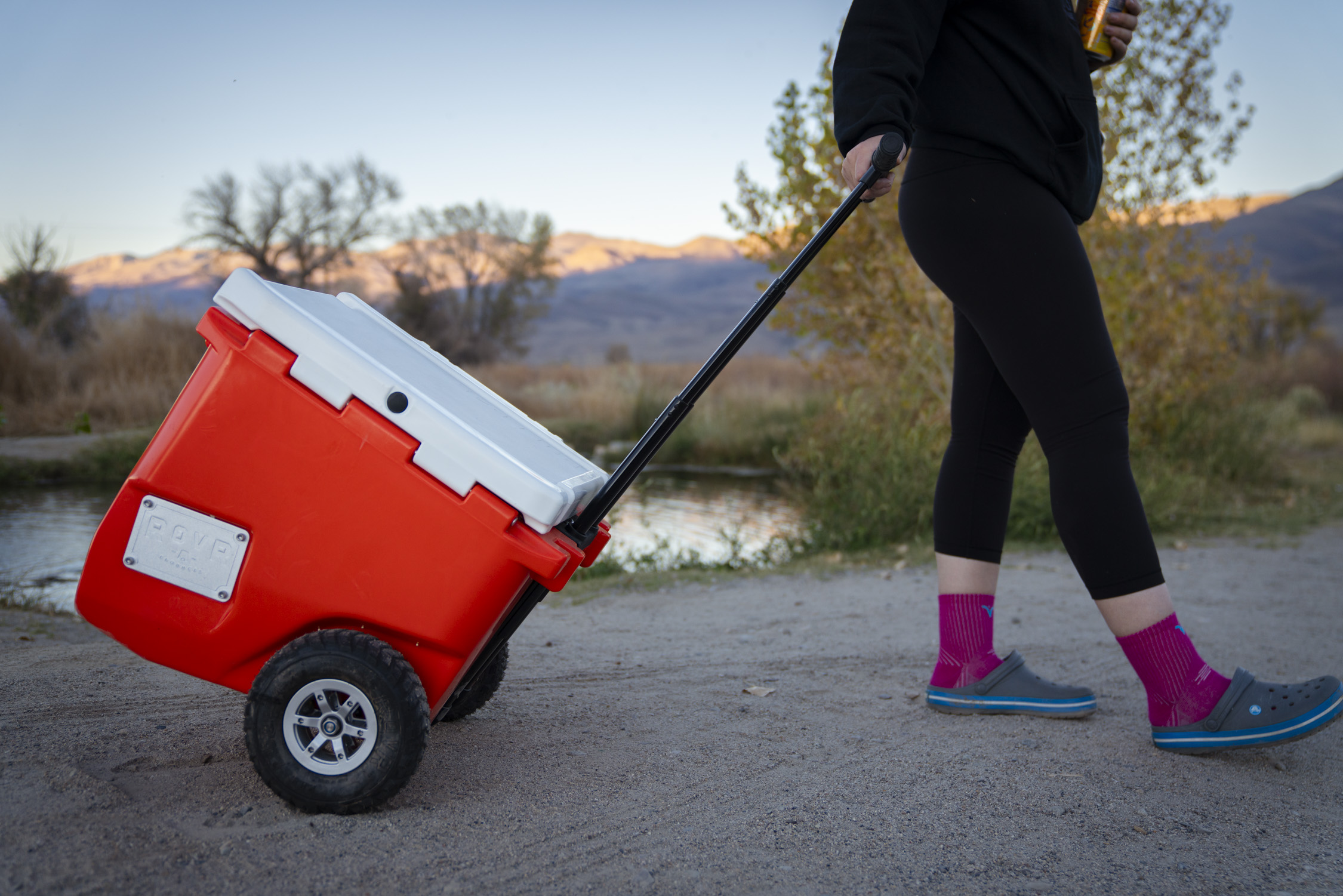
Durability & Build Quality
It’s also worth considering the durability and build quality of a cooler, especially when you start shelling out some more cash. A cooler can be an expensive investment, and if you are planning on using one a lot, it’s nice to know that it will hold up to years of use.
Rotomolded Coolers
Rotomolded coolers take the cake in this category again, with their continuous molding design creating a noticeably thick and robust exterior. This method creates a uniform thickness all around. These coolers have superior ice retention and can be a seat or footstool, not to mention withstand attempts at forced entry by grizzly bears.
Yes, you read that correctly. Coolers such as the YETI Tundra 45 and RovR RollR 45 hold certifications from the International Grizzly Bear Committee that state that they successfully withstood attempts at entry from actual grizzly bears.
Not only is this a testament to their durability, but it also allows you to have peace of mind if you do any camping in areas where bears might be of concern.
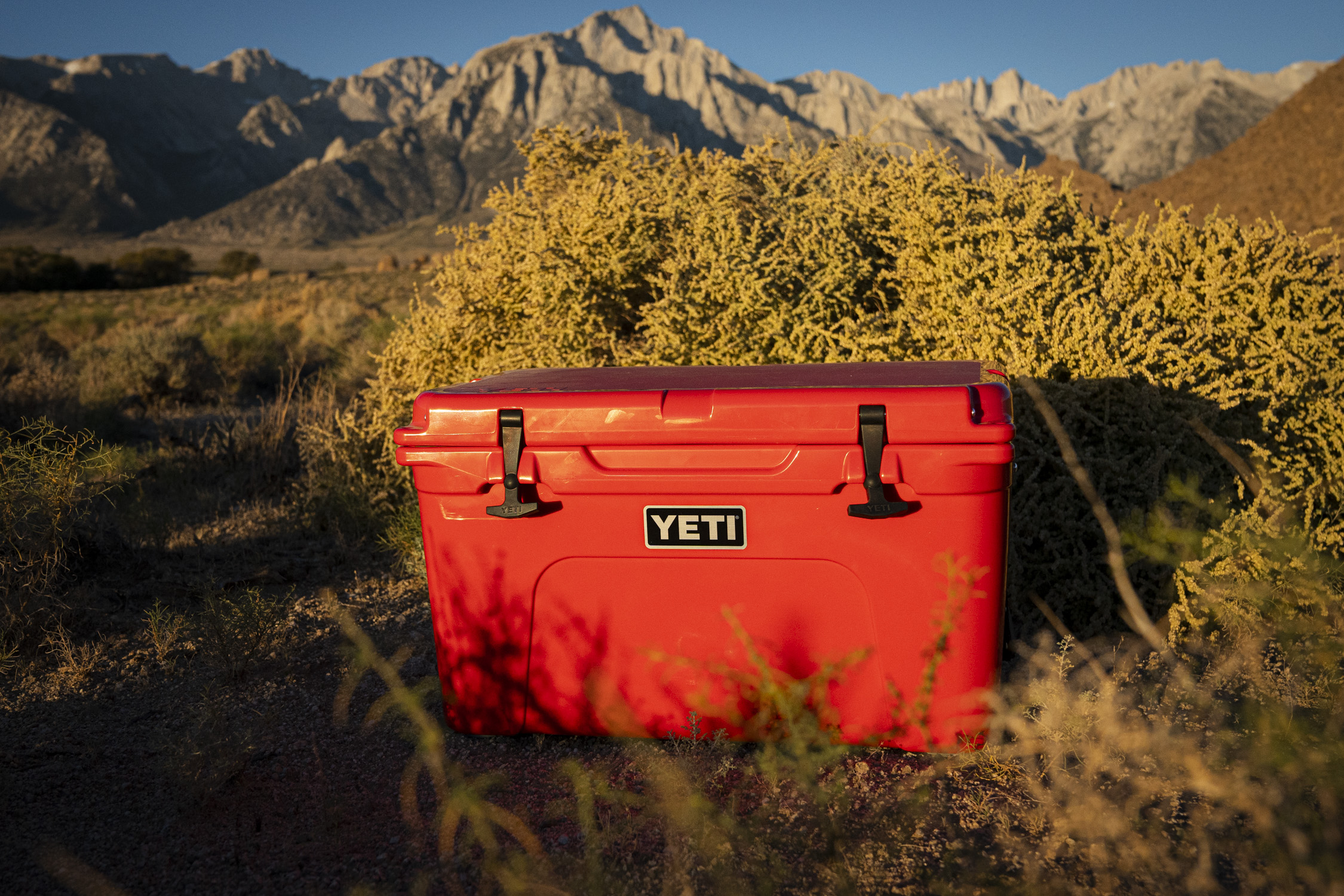
Injection-Molded Coolers
Injection-molded coolers create two separate shells, fused together by insulated foam. They are lighter than their rotomolded counterparts. Yet they are more likely to crack or separate, causing their durability to be called more into question over time.
While you can sit on the lids of the Igloo ECOCOOL and the Coleman 316, the noticeable flex of their plastic will make you want to be more careful handling these coolers.
Recyclable & Compostable Coolers
Recyclable coolers (like Igloo’s Recool) take a completely different construction approach, using molded paper pulp rather than plastic shells. While they aren’t built to last for years like rotomolded or injection-molded coolers they’re sturdier than disposable Styrofoam chests and can handle the weight of food, drinks, and ice for a day. Their durability is best suited for occasional use, festivals, or day use where ruggedness isn’t the main priority.
Maintenance & Cleaning
After purchasing a new cooler, it’s important to keep up with some basic cleaning and maintenance to ensure its lifespan is as long as it can be. After use, you’ll always want to leave the lid open to let the cooler air dry. This ensures no moisture gets trapped inside, causing mildew or bacterial growth. It’s a great idea to wash the interior with some warm, soapy water, and then let air dry.
You do not want to leave a cooler with food and water in it for days, as this will ensure bacterial growth (and in coolers like the Igloo Recool, may cause disintegration). Most of the coolers in our lineup are relatively easy to clean. The lighter coolers, such as the Igloo ECOCOOL and the Coleman 316, can tip over easily when empty and the lid is open. This makes them a little more cumbersome as the lid can flop close on you while giving the scrub down.
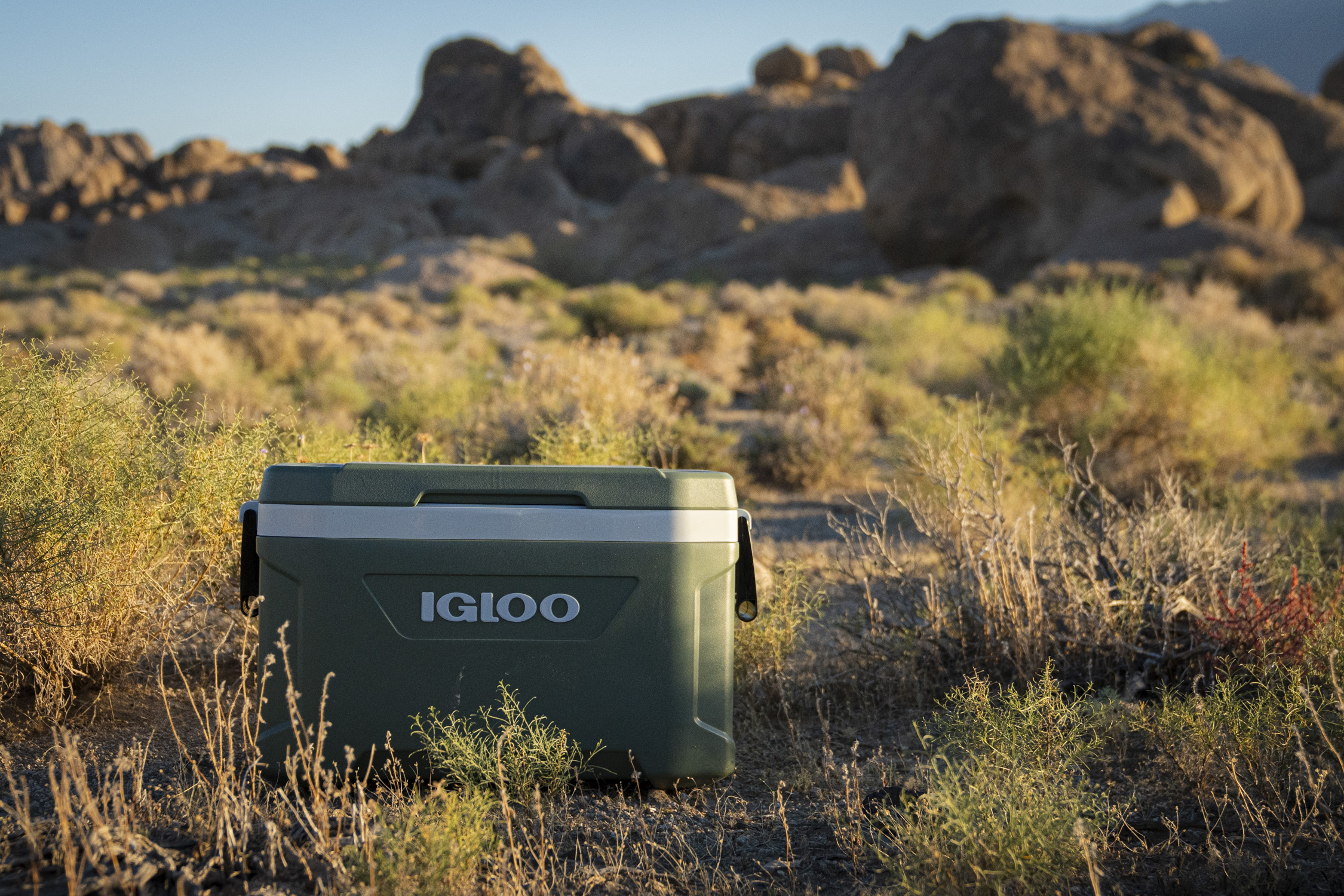
Price & Value
The best coolers are not cheap, but if you know what you need, it’s easier to find a model that can fit your budget and your food storage needs.
Budget
In general, the less expensive cooler will be smaller and have injection-molded plastic shell with some sort of foam insulation. They have thinner walls and don’t insulate as well as more expensive models. If you’re only going to use your cooler for day trips or brief overnight, then it’s totally possible to make an inexpensive cooler work for you!
The most affordable cooler in this guide is the Igloo Recool 16qt Cooler ($10), a recyclable and reusable featherweight. It’s quite different than all the other coolers listed here because it’s made of recycled paper and is not built for the long haul. Still, it does a great job of keeping drinks chilled for a day when portability is the priority.
The Igloo ECOCOOL ($60) gets you 52 quarts of storage for food and ice is lightweight, and even had a little ice left at the end of our 10-day retention tests. Its handles are a bit flimsy, it isn’t bear-proof, and there is no drain plug, but if keeping your food fresh for a day or so is all you need, it will absolutely do the trick. If you need even more space without breaking the bank, check out the Coleman 316 Series Chest Cooler ($110)
Mid-tier
The Xspec Pro 60-Quart Cooler ($230) sits smack in the middle of price and performance and is a great option if you need a cooler to last a week. Or, for a few more dollars, you can snag the YETI Roadie 24 2.0 ($250), a rotomolded option with fantastic ice retention and a newly-added drain plug.
Premium
The YETI Tundra 45 ($325) is our top pick and one of the more expensive coolers on our list. The Tundra is THE cooler that set off the roto-molded cooler wars and has pushed the competition to really up their game. The Tundra 45 is IGBC-certified (bearproof), has high-quality polyurethane foam insulation, and easily held ice for over ten days. The Dometic Recon 41L ($325) didn’t do as well in the ice retention test but has a lot of nice features and still stood out as a favorite.
The Canyon Coolers Outfitter 55 ($300) isn’t bearproof, but does have better storage capacity, and the RovR RollR 45 Wheeled Cooler ($350) is easier to move around. The Bote 5 Kula ($299) is the smallest of the higher-end options, but it does come with some nice-to-have features. All are excellent insulators, but it’s best to check the specs to make sure you’re getting exactly what you’re looking for if you’re going to pay top dollar.
Frequently Asked Questions
There is no single best cooler. Really, what’s most important is what you’ll be using the cooler for and how often. If you plan on taking it out every week, a more durable cooler is probably the best pick.
We’ve listed the best cooler (based on our feedback and testing) but also the best budget, the best wheeled cooler, and a few others for you to choose from.
Out of the coolers we tested, you really can’t go wrong with Igloo or Coleman coolers. Both are great quality for the price.
Conversely, most people wonder if YETI is worth that high price tag. The answer is yes, but it’s also overkill for many people — do you really need a cooler to keep ice cold for 10 days? Are you beating up a cooler enough that you need rotomolded construction? Most of us aren’t off the grid in rugged environments for that long or very often.
If you’re looking for the best cooler to keep contents cold, a hardside cooler is much better than a softside one. They are also more durable.
But really, the answer to this question is personal. What’s the best type of cooler for you? If you need help answering that question or narrowing down your choices, we’d recommend comparing our best picks.
Hard coolers usually offer more insulation and much more protection (both inside the cooler and on the exterior). They also offer features that soft coolers can’t, like drainage plugs and wheels for easy transport. Many employ bear-resistant latches and locks so you don’t have to worry about leaving them outside at camp.
If you need a cooler that will live in your garage or vehicle — and that you can also take to the field, beach, or camp — a hard cooler is better. But if you’re concerned about carrying it longer distances or care about weight, a soft cooler might be better. The best option: Get one of each!
How long a cooler will hold ice depends on its construction, size, and the conditions you’re using it in; ice will last much longer in the high alpine than it will in the desert, for example. Premium rotomolded coolers, like YETI or RTIC, can keep ice for 5–10 days if packed properly and kept out of direct sun. More affordable injection-molded coolers, like Igloo or Coleman, usually hold ice for 1–3 days. Compostable or disposable coolers, such as the Igloo Recool, are designed for shorter outings and typically last up to 12–24 hours. No matter which cooler you choose, pre-chilling it and minimizing how often you open the lid will make a big difference in ice retention.
The right cooler size depends on how many people you’re packing for and how long you’ll be out. For day trips or solo use, a 20–30 quart cooler is usually plenty. Weekend camping trips for a couple of people often call for a 45–60 quart model. Larger groups, extended expeditions, or hunting and fishing trips might require 75+ quarts. Keep in mind that ice takes up a significant amount of space; usually around 30–40% of the cooler’s capacity. Size up if you’re planning on storing food and drinks for multiple days.

The Best Soft Coolers of 2025
We tested the best soft coolers with styles for every budget and adventure. Top picks include YETI, RTIC, Hydro Flask, and more.

The Best Backpack Coolers of 2025
We tested the best backpack coolers with styles for every budget and trip. Top picks include ICEMULE, Hydro Flask, and more.




